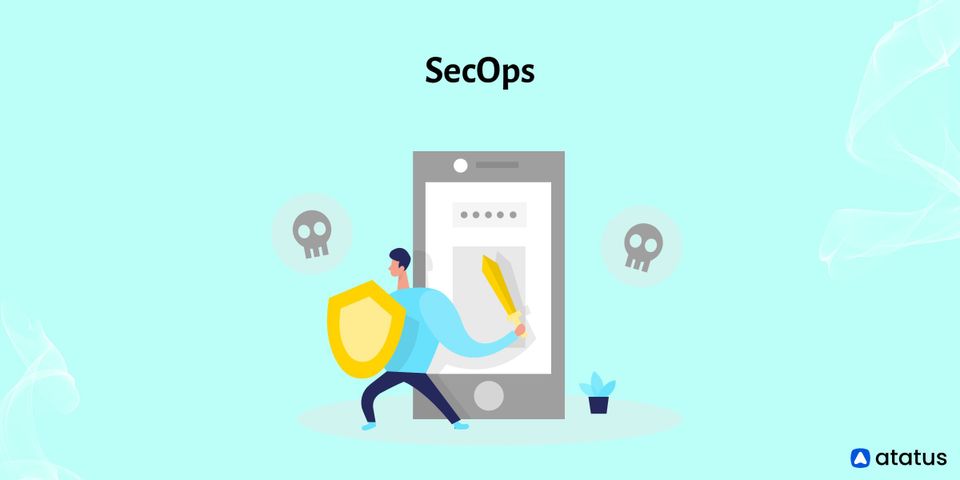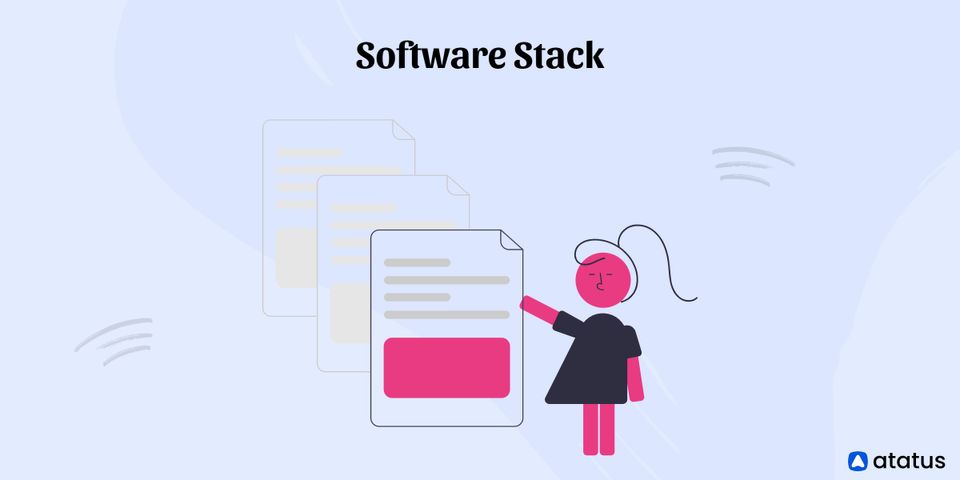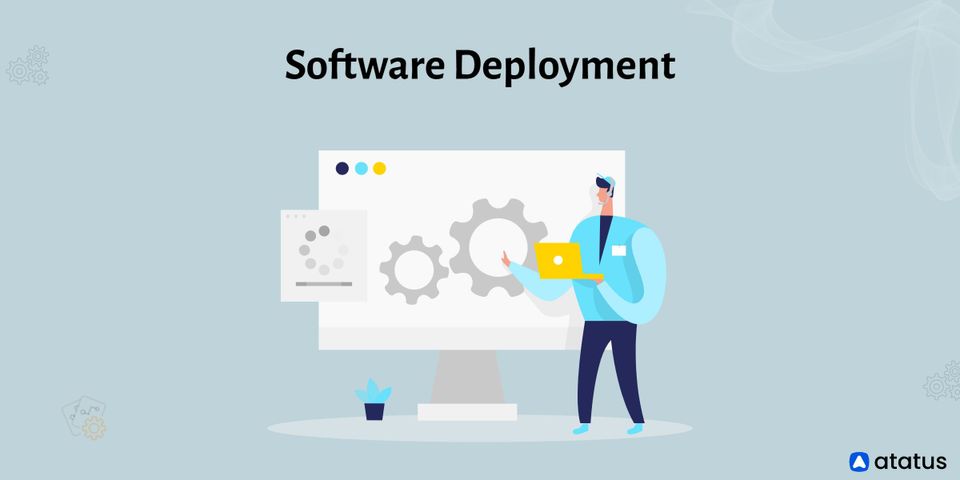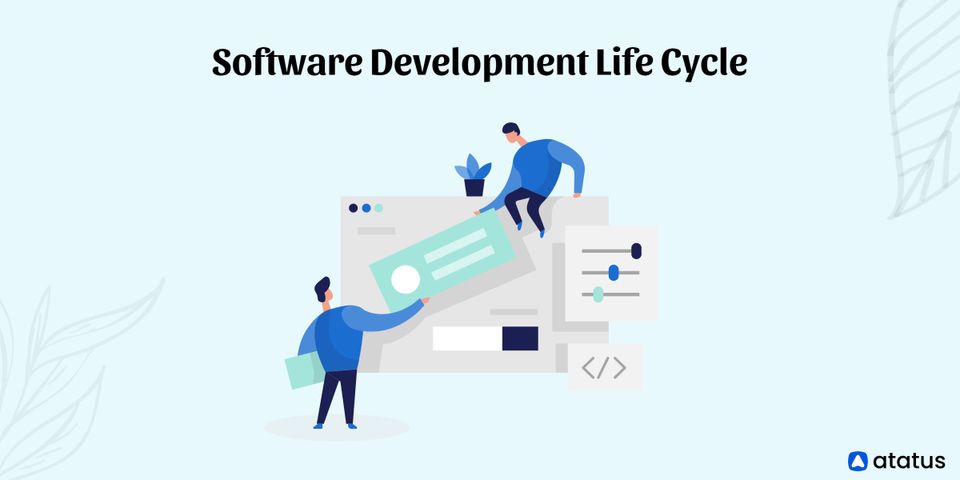The DevOps cycle allows businesses to integrate security into their software development process. Organizations employ security best practices and compliance standards throughout the application lifecycle, rather than performing a "last inspection" before releasing a product. This procedure is commonly referred to as "SecOps" or "Security Operations”.
We will cover the following:
- What is SecOps?
- What is the Role of SecOps?
- SecOps Goal
- SecOps Functional Areas
- Benefits of SecOps
- Why SecOps is Important?
What is SecOps?
SecOps is a collaboration between IT security and operations teams that combines tools, processes, and technology to keep a company secure while lowering risk.
SecOps can range from a management methodology that is used across the entire business to one that is deployed in a specific IT project, depending on the size and structure of your organization. SecOps is all about incorporating security issues as early as possible, and preferably at every level of planning and development.
The best way to grasp SecOps is to first explore its more well-known counterpart, DevOps, and then consider what occurs when security is added to the mix. You want to get away from a siloed model where the development and operations teams operate separately with DevOps.

Instead, you bring them together to work as a single, cohesive team that can respond to business difficulties more effectively and quickly. This is accomplished by combining tools, techniques, and objectives, with effective tooling and automation at the center of the process.
When security and IT operations teams collaborate more closely under a SecOps model, they share responsibilities for the objectives involved in keeping their enterprise's environment productive and secure. With this proactive cooperative effort, security risks are more visible across the enterprise, and vital information is exchanged that can assist remedy security issues rapidly while maintaining IT operations agile and fully functional.
What is the Role of SecOps?
Establishing a defined set of objectives, roles, and duties for SecOps is one of the key issues that IT organizations confront.
Security and operations should work together as an integrated team to ensure the ongoing security of the organization's information assets while meeting application performance goals and service level agreements.
Many IT companies set up dedicated security operations where SecOps team members can interact and work toward these goals.
The following are some of the security operations’ most essential activities and capabilities:
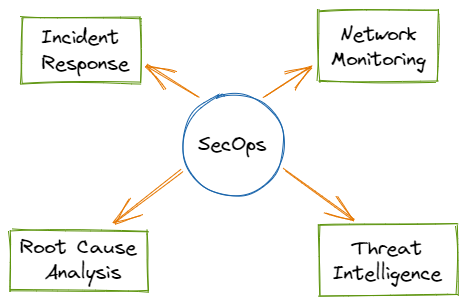
- Incident Response
SecOps teams are in charge of implementing the incident response plan when an unwanted or unexpected event arises. Users may report incidents; however, they are typically identified by network monitoring software tools before they have any impact on end-users. When a security breach occurs, an incident response team responds quickly to limit the damage and prevent the attacker from gaining further access to the network. - Network Monitoring
Typically, SecOps teams are in charge of closely monitoring activity across the company’s IT infrastructure, including private, public, and hybrid cloud environments. Security events, as well as the operational condition and performance of installed applications, are all monitored on the network. - Root Cause Analysis
SecOps' ability to evaluate and analyze information to find the underlying cause of a security breach, performance issue or other unexpected network event is reflected in forensics studies of security incidents. SecOps teams do root cause analysis, determining the underlying causes of security vulnerabilities and resolving them before they can be exploited again, using specialist security software tools. - Threat Intelligence
Threat intelligence is a two-step security process that involves gaining knowledge and understanding of potential security threats to the company, as well as developing strategies to identify and respond to those threats (or proactively prevent them from occurring). Threat intelligence can be undertaken as a collaborative effort between members of the SecOps team, the organization as a whole, and even between separate corporate units with a shared interest in securing their internal systems.
SecOps Goal
The SecOps methodology's overarching purpose is to ensure that businesses do not jeopardize an application's security while attempting to fulfill development timetables and application uptime and performance criteria.
Obtaining management buy-in and establishing a clear and attainable schedule for increasing company security are the first and most crucial requirements for a SecOps program's success.
Following that, IT organizations should form a cross-departmental collaboration to include application security features and elements at an earlier stage in the development process.
Planning and requirement analysis, as well as the formulation of application requirements and product architecture design, are all part of a normal software development cycle. The product will be fully tested before being deployed to the production environment once it has been produced.
The problem with the old methodology is that security concerns are often introduced late in the development process.
SecOps overcomes this challenge by encouraging collaboration between operations and security teams throughout the development process, ensuring that critical security features are baked in early on while minimizing the impact on application performance.
SecOps Functional Areas
SecOps is a support function for an organization's day-to-day operations. Let's look at some of the functional areas where SecOps provides this support:
- Command Center
The SOC's instructional and interactive division. The organization can request SecOps assistance through this center. During training and incidents, the center provides a mechanism to broadcast information to the organization to raise awareness of the company's position. - Digital Forensics
The ability to examine information assets to investigate and respond to incidents. It's the science of conserving, recognizing, recovering, displaying, and analyzing data saved on computers or digital media devices. Digital forensics is used by companies to separate information that demonstrates or disproves a hypothesis. - Incident Response
An organization's ability to deal with and respond to security incidents. The NSM team normally detects the event, while the incident response team determines whether it is a true incident, mitigates the damage, and eliminates the attack. IT staff can use an incident response plan to help them isolate, respond to, and recover from attacks. An incident response plan's goal is to prevent losses like data loss or theft, service outages, and illegal access. - Network Security Monitoring (NSM)
The process of looking for unusual activity in network data. It entails alert-based detection as well as long-tail analysis. Although NSM is not an intrusion detection system (IDS), it does employ IDS-like procedures. To detect and evaluate intrusions, NSM requires the collection of all data kinds (session, event, full content, and statistics). - Self-assessment
A company should identify, monitor, and assess vulnerabilities, as well as do regular penetration testing and form a red team. An organization's red teams are used to evaluate the success of a program. They imitate attackers' strategies and behaviors. The blue team, on the other hand, is the squad that defends against the simulated attack. Self-assessment entails routine chores; nonetheless, including these actions in the SecOps organization enhances threat detection and can provide information to the operational team about the security environment. - Steering Committee
A group was formed to help the SOC protect the organization's information assets by assisting in the development of the organization's strategic vision. The SOC communicates with the organization through the steering committee what it has accomplished in terms of business defense and what it aims to do in the future. - Threat Intelligence
Knowing how attackers operate allows you to take specific actions to isolate, disrupt, and deceive them. It informs users about new and emerging security threats, exploits, threat actors, malware, compromise indicators, and vulnerabilities. The more an organization can protect itself, the more insight it has into possible threats and the more information it has about an attacker's operations, infrastructure, capabilities, and motives.
Benefits of SecOps
SecOps model has several significant business advantages. You naturally minimize the risks of a data breach, boost response times, and build consumer confidence in your products and services when you improve your security posture.
- Fewer Application Disruptions
Changes in application code are coupled along with deployment rules, resulting in fewer configuration issues. - Fewer Cloud Security Issues
For a safer security environment, there will be fewer security breaches, vulnerabilities, and security distractions. - Improvements in Auditing Processes
Vulnerabilities that have been identified can be addressed ahead of time. Policies for adhering to relevant standards are checked and enforced automatically. - Reduced Resources
For an all-around streamlined security plan, key security operations are automated, and effective responses are managed. - Return on Investment
When compared to a standard security environment, SecOps provides a higher return on investment. - Streamlining Security and Operations
Priorities are better handled and consolidated, communication and information are more integrated, and tools and technology are connected.
Why SecOps is Important?
Every day, security threats evolve and become more inventive. It almost appears that an IT security plan will never have enough staff to avoid every attack and prevent every security problem. To enlarge a team and put more hands on deck, a larger team can assist with application deployment and security oversight at all phases of deployment.
Security takes a back seat to speed and tool adoption. Frequently, operations and development teams are concerned with application performance and utility as a tool. When security isn't prioritized, an application might become exposed to attacks and compromised.
Security has outpaced innovation, and it is critical to preserve security alongside innovation. Otherwise, innovation can be viewed as a liability and a vulnerability.
As cybercriminals become more inventive with their attack tactics, the amount of time it takes to exploit a vulnerability has dropped. Protecting data and the integrity of a company's information requires faster security responses.
Summary
Security is everyone's responsibility in a SecOps strategy, and it extends to every part of the organization or project. As a result, products and services have fewer vulnerabilities, better compliance, and patching is faster and easier.
You'll gain visibility into your complete security posture, which will help you better manage and respond to incidents. The ultimate benefits of adopting a SecOps methodology include higher ROI, increased productivity, and better customer satisfaction.
Monitor Your Entire Application with Atatus
Atatus is a Full Stack Observability Platform that lets you review problems as if they happened in your application. Instead of guessing why errors happen or asking users for screenshots and log dumps, Atatus lets you replay the session to quickly understand what went wrong.
We offer Application Performance Monitoring, Real User Monitoring, Server Monitoring, Logs Monitoring, Synthetic Monitoring, Uptime Monitoring, and API Analytics. It works perfectly with any application, regardless of framework, and has plugins.

Atatus can be beneficial to your business, which provides a comprehensive view of your application, including how it works, where performance bottlenecks exist, which users are most impacted, and which errors break your code for your frontend, backend, and infrastructure.
If you are not yet an Atatus customer, you can sign up for a 14-day free trial.

